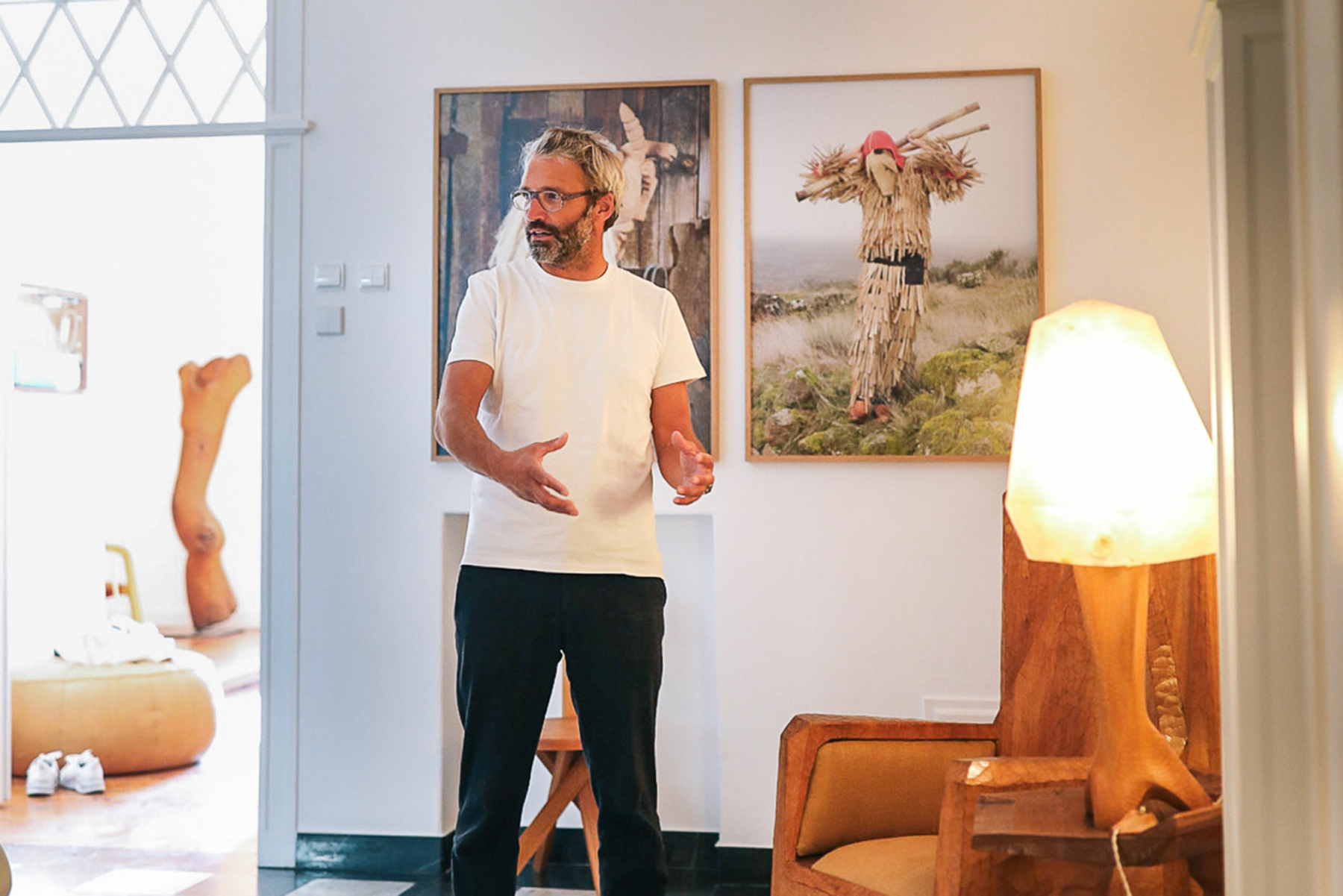Designer Duchaufour-Lawrance moves through his thoughts to share his unique view on design and storytelling, what drives him today, and why the lessons that he learns from artisans and their crafts are ultimately so important.
One could say that 2017 had been a transformative year for Noé Duchaufour-Lawrance, but that wouldn’t do justice to someone who, in fact, had changed well before then. Noé’s Paris-based studio was thriving and the designer was collaborating on various projects with industry leaders such as Saint-Louis, Hermès, Ligne Roset, Bernhardt Design, Sèvres, Mobilier National, Dior, Baccarat, Zanotta, and Tacchini. Something, however, felt amiss. “I didn’t know exactly what I was looking for. I just wanted to have a place where I could reconnect with what I felt deep inside,” he confesses. “When I decided to move to Portugal, there was a moment when I realized that I needed to change. In all the work I was doing at that time, at my studio in France, I felt increasingly distant from my deepest values and from who I was. Strangely, everyone was surprised when I said this. I was talking a lot more about nature and the environment, or about the relationship between materials, handwork, human skills, and all that; but when I was in Paris, I felt I was sometimes doing almost the opposite. Of course, the shapes and the language I had been using up to that moment were inspired by organic shapes and fluidity—the idea of a movement, which was connected to everything I was designing. But that wasn’t enough. In a way,” he explains, “that was only an idea of the shape; it wasn’t an intrinsic element of the construction or of the process.”
Noé Duchaufour-Lawrance is curious. Curious about life and curious about people. Born in Southern France, in 1974, he grew up surrounded by art: his mother was an art teacher and his father a sculptor. Following his father’s footsteps Noé studied sculpture at École Nationale Supérieure des Arts Appliqués et des Métiers d’Art. Later, he would receive a degree in furniture design from the prestigious École des Arts Décoratifs.


His Lisbon home is the reflection of a unique creative universe populated by objects made by his father, his children, his friends, and by the artists he admires in a variety of media: from pieces of furniture and sculpture to music, photography, and painting. However, it wouldn’t be fair to say that this is where Noé feels most at ease, as one can tell that he is a man of many places—his office, the artisans’ workshops, or the many sites he has traveled to around the world.


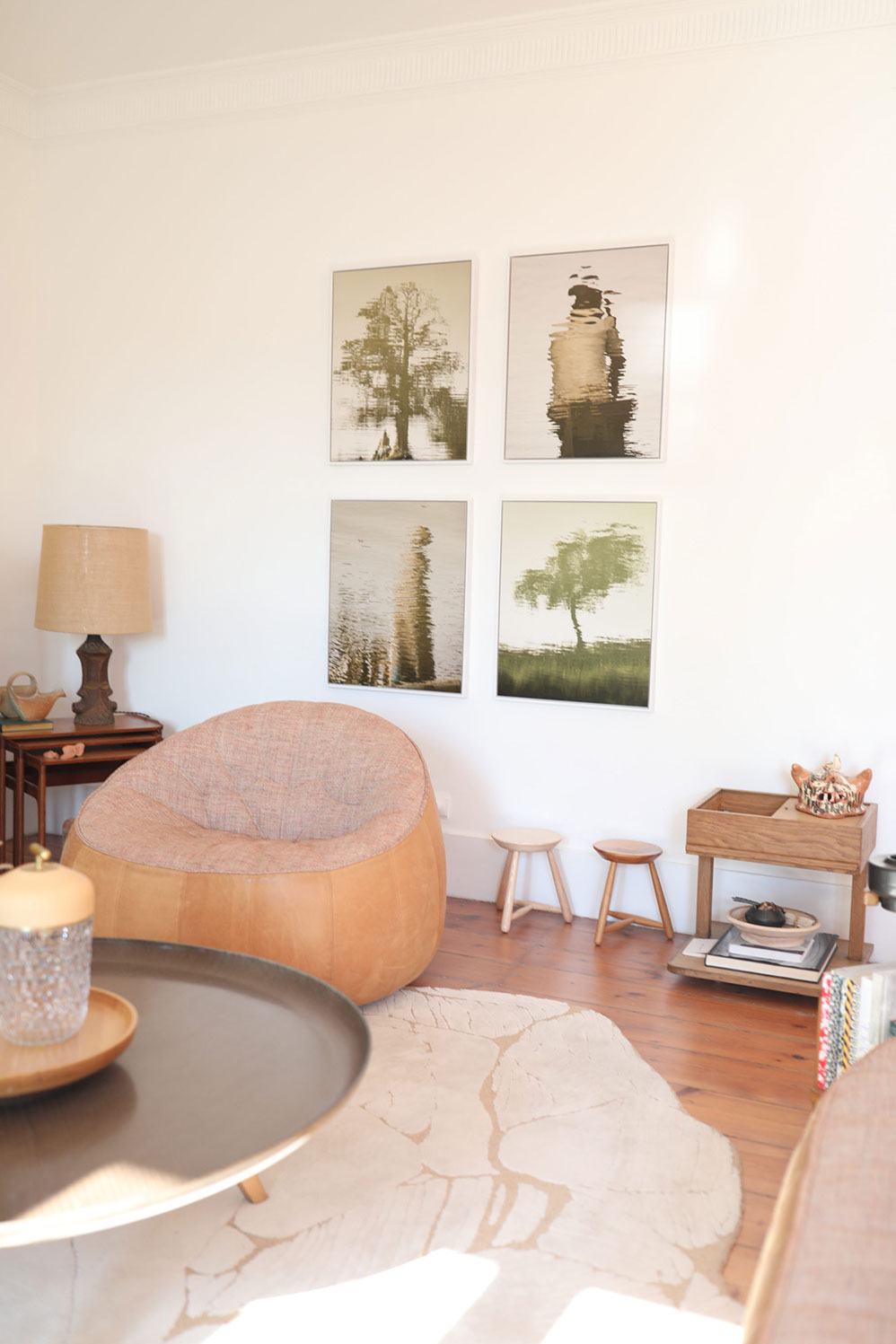


“You have to take your time and be able to go in a direction which is not exactly the one you had imagined.”


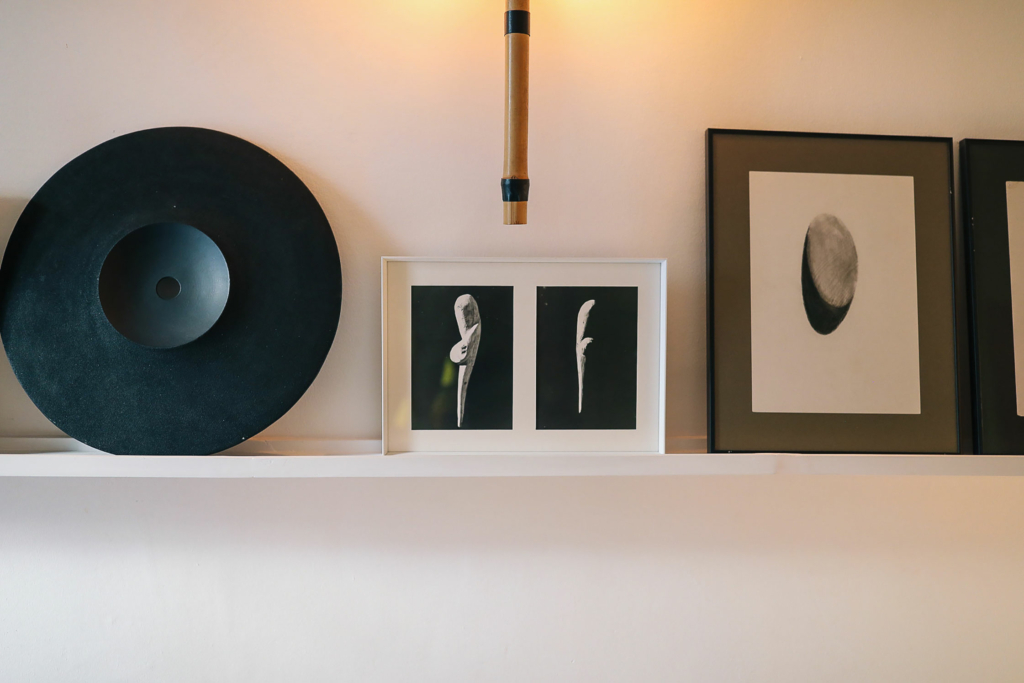

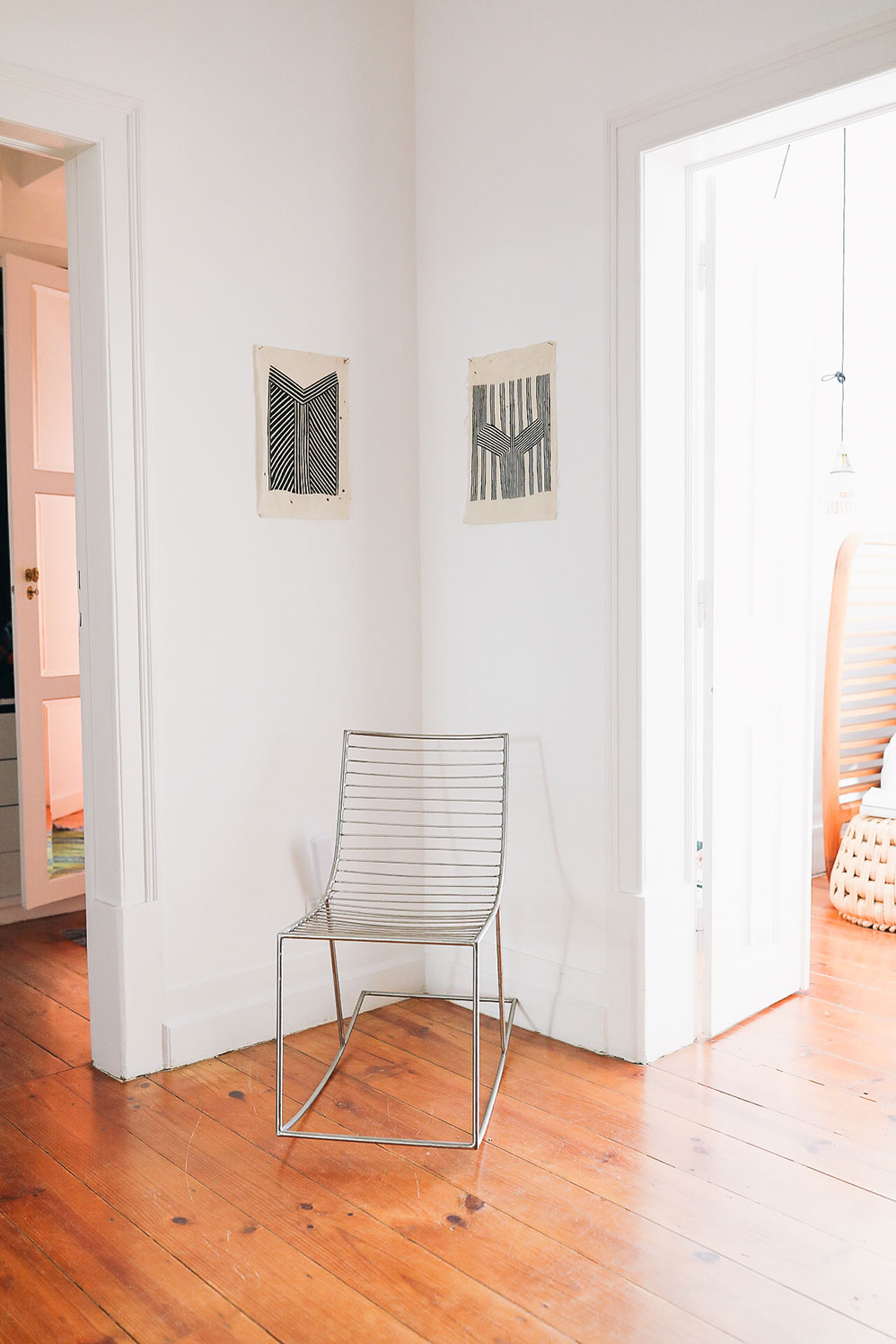
Finding purpose in his desire for change, the French designer eventually spotted Portugal on his horizon. He had been there several times before—either following the beck of kitesurfing, which he still practices, or for work—, but it was in 2017 that he sold both of his homes in France and made the permanent move, driving the whole way over. “This moment was super important because I was literally moving from one point to another—and not going back,” he says. The journey would end up becoming intimately connected to the second collection of the studio MADE IN SITU that he opened in 2020.
“Ever since moving here, I knew that I would do something related to the territory. I just didn’t know how.” Indeed, talking with Noé, you realize not only the territory’s role in his life, but also, and perhaps more importantly, that the Portuguese territory is where he has been able to reconnect with himself.
“In all the work I was doing at that time, at my studio in France, I felt increasingly distant from my deepest values and from who I was.”



Noé’s friendship with Fatime Durkee—co-founder of Passa ao Futuro, a project that promotes collaboration and innovation by bringing together Portuguese artisans and designers—and his team’s year-long field work laid the foundations for MADE IN SITU. The Lisbon studio/art gallery was born in close relationship with artisans, and their own systemic connections to nature, as a platform that both belongs to its territory and draws inspiration from it. And what do such artisans have to teach him? “The first thing, I think, is humility. OK, you want something—but first you have to listen. You have to take your time and be able to go in a direction which is not exactly the one you had imagined,” Noé explains while dreaming of the day on which, once again, it will be possible to see “new artisans at every corner, meeting the needs of the neighborhood, for example, and in connection to other crafts.” The French designer believes that we, as a society, have everything we need in our lives to make something, but that, in between, we also need stories that remind us where we are and how we’re connected to the territory, as well as stories that remind us who we are.



“I’m listening more. I’m listening not only to what people say but also to materials. My way of working isn’t linear. I really like it when there are ups and downs and when we’re able to change our direction during the process. I think it’s a shame to shut that out because we have to focus on deadlines and targets. It’s beautiful to allow the possibility of change and of reconsideration. I do it a lot now as part of my process.
Barro Negro, the first collection by MADE IN SITU, ventures into the heart of a traditional ceramic firing technique by which ceramics are buried in the ground. The process is called soenga and, in a truly cathartic moment of communion, gave birth to a collection of objects that are quite literally cradled by fire. Upon completion, the pieces were displayed in the gallery in a scenic arrangement that brought the collection and the visitors together in an indelible way.

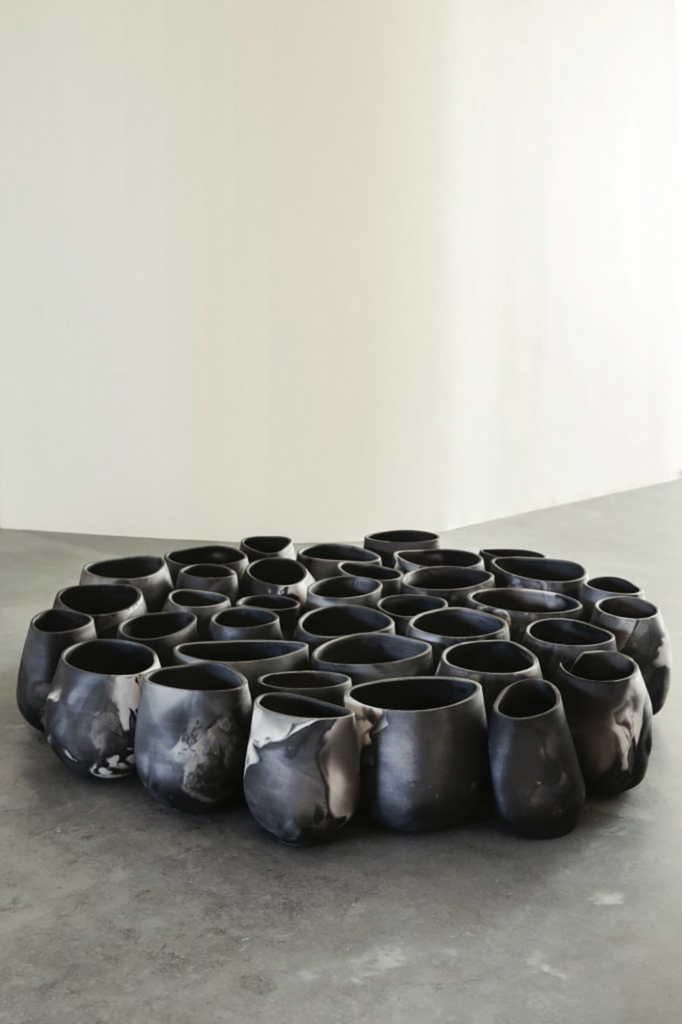
“We have everything we need—but what we need are stories about where we are and who we are.”
MADE IN SITU’s second collection, presented in 2021, is closely linked to the wildfire-scorched landscapes that Noé saw during his road trip to Portugal, in 2017. The idea of creating a collection based on burnt cork, however, emerged during a visit to NF Cork, in the Algarve. It was in partnership with that company that Noé developed the entire creative process. Granorte, in the north of the country, was responsible for giving shape to the cork blocks. The memory of the wildfires etched into sculptural pieces, whose gradients range from charred cork to the purest and finest of grains, is both moving and liberating to Noé: “This is like a phoenix arising from the ashes, just trying to show that, even in tragedy, there’s always a way to change things.” The collection is made of dichotomies and was presented in the gallery, once again, with meticulously curated stage and sound design—the latter by Luis Clara Gomes (aka Moullinex).

“I don’t do interior design anymore because there is just too much compromise. I wasn’t feeling comfortable with that. I was always frustrated with the result.”








Noé and the MADE IN SITU team have three projects currently underway. The designer can barely contain his enthusiasm when he talks about the next one, which represents a plunge into the depths of the territory, combining bronze and beeswax to create candle holders inspired by the propellers of the boats of Peniche, on Portugal’s central coast.
Despite the diversity of Portuguese projects, France is a chapter of his life that continues to be written. Noé still has his studio and his creative team there, which are now aligned with the values that made him leave the country: “I don’t do interior design anymore because there is just too much compromise. I wasn’t feeling comfortable with that. I was always frustrated with the result and I don’t care to be involved with so much information going back and forth. There are designers with whom I’ve worked for over 10 years and I’ll continue to work with them, as long as the human element is at the center of the project. That’s very important to me. I’m not a big believer in the industry as a whole anymore, in the system behind it.” His most recent discoveries include the intricate art of weaving bulrush, a plant fiber which has long been used to create decorative objects, and the Nisa stone-pottery technique, which involves inlaying tiny bits of quartz in pottery pieces.
When talking about the positive impact of a community’s actions, it’s often said that “it takes a village to raise a child”. Along these lines, it would be fitting to say that Noé has sought to attach meaning to a work and a wisdom that resides in many of those villages. Because in the end, those are the stories and poems that are remembered forever.
Noé Duchaufour-Lawrance is a French designer who works across a wide range of disciplines deeply rooted in nature. Throughout his career, he has collaborated with some of the most prominent names of the international design landscape, created interior design projects in private homes all around the world, as well as for brands such as Montblanc and Air France. To learn more, head over to MADE IN SITU or follow to Noé Duchaufour-Lawrance’s work on Instagram.
Text: Cátia Fernandes
Photography: Jenna Duffy
